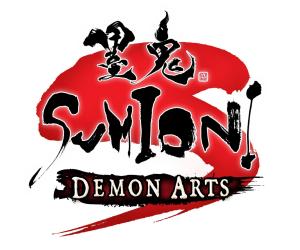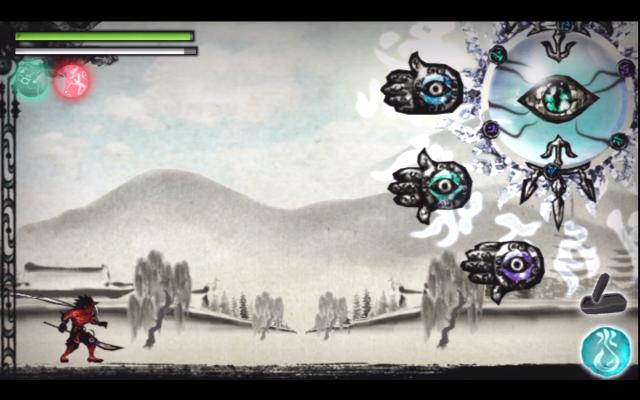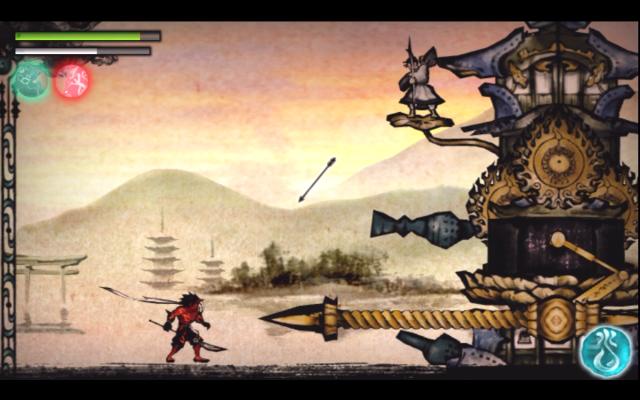 Game: Sumioni: Demon Arts
Game: Sumioni: Demon Arts
Developer: Acquire Corportaion
Publisher: XSEED Games
Available on: PlayStation Vita
There is no escaping the fact that the first thing you think about when you boot up Sumioni is how closely the art style resembles Okami, Capcom’s recently re-released 2008 classic. That isn’t to say that the developers have pinched wholesale from Clover’s masterpiece – but simply that they too have been deeply influenced by the sumi-e ink-washed techniques first employed many moons ago in the ancient Far East. Even Capcom themselves returned to the (ink) well again when they included wonderful painty flourishes in Street Fighter IV. It looks gorgeous. Google image search alone will bring up thousands of mind-blowingly ace works of art from Japan, China, Korea and beyond. Where this legendary, difficult-to-master technique calls for black ink in various degrees of saturation on the traditional washi paper, videogame artists have altered the rules somewhat, enlivening the monochromatic palette with the introduction of bright colours, which stand out sublimely against the smoky, inky backgrounds. Okami remains one of the most staggeringly beautiful games you will ever set your peepers upon, and ACQUIRE Corp’s new hack and slash platformer is no slouch either, dishing up a visual treat that really impresses on the OLED screen. Okami married exceptional gameplay to its world-beating artistry – so the question is – does Sumioni have the requisite playability to match the stunning looks?
Although the setting is never made explicitly clear, it is plainly obvious that the game is set in some kind of ancient period of Japanese history – and you are placed in the shoes of the demon Agura, a monstrous looking badass who has been summoned in order to do the bidding of the Inkmaster, who happens to be in deep doo-doo thanks to a fracas with some enemy nasties. Thankfully the ‘Master has seen fit to call upon the help of the Ink Gods – who grant our demonic hero the ability to employ the powers of sumi-e-style inky artwork to deal out his own brand of platforming justice. What does this mean? Well, don’t expect anything approaching the majesty and innovation of the Celestial Brush.

On a basic level, you can draw your digit across the screen to draw platforms that Agura can leap onto. When perched on one of the platforms you have drawn for him, Afura gains additional strength, meaning that finding the best placed spots in order to maximise the amount of damage becomes crucial. You can also use a water ability to wash away anything you have drawn or cancel out enemy arrows and other projectiles. Using these techniques will drain your ink meter, but you can replenish it by awkwardly rubbing the much-underused Vita rear touchpad. But that isn’t all! You can also use your ink to perform feats of magic. Pulling the L trigger access such demonic treats as devastating lightning bolts or the ability to set your ink platforms on fire (handy for creating a fiery protective wall). You can toy with the enemies – setting them on fire and then putting them out with water, which seems to particularly irk them. It says a lot that although you can use some of the face buttons to access some of the special tools in your arsenal, the touch screen is so intuitive and easy to use that it becomes second nature. Remember I mentioned those Ink Gods? They are a boon, too – you can call upon them once per level by drawing a symbol on the screen, at which point they will enter the fray and kick some serious behind for a brief period.
Everything I have described works perfectly well in practice, and the game looks smashing. There is an interesting branching level system at play – you are ranked out of three stars at the end of each stage, and progress down a different route depending on skill. There are different levels to see the better you play, which in turn lead to different endings. It reminded me a little of Starfox 64/Lylat Wars in this respect, or even the structure of a latter day shooter like Sine Mora. If you want, you can whizz through the game in little more than an hour – yet practice is definitely required to achieve the requisite number of stars to reach the more difficult, diverse and complex stages that offer more of a challenge.

The trouble is, the actual game itself is pretty easy, and just….dull. The story being a cliché-packed, indistinct pile of cobblers doesn’t help much, either. There are reams of text to read in between levels, which can be skipped, yet do not inspire the same sense of setting – of a grand quest, of any bloody emotion – as something like a Castlevania title or a superior downloadable platform-actioner like Dust from the XBLA Summer of Arcade.
VERDICT: Like Dokuro, which I looked at recently, Sumioni is a game that received a full-whack retail release in Japan. It was a surprise to hear that both would be published in the UK, and was encouraging to hear of a drop in price – it is fair to say that most Western gamers would most definitely baulk at the idea of chucking forty quid at titles that are shorter than other cheaper fare available for download on this and other platforms.
In the graphical stakes, there will surely not be many better looking 2D platformers released for the system – indeed only Rayman Origins can claim to hit the same kind of heights. The controls are excellent, and the game is simple to pick up and play with very little explanation required. Sadly, the overall experience is simply not meaty enough to be able to get overly excited about. It would have been a revelation had it been released back at the turn of the century, however in this day and age gamers expect more. I certainly expected more than a brief score-attack platformer. Sumioni is a game that provides a good-looking, fleetingly diverting experience – which for just under a tenner isn’t too much of a gamble. Just don’t expect an epic to rival better known exponents of the sumi-e style.







